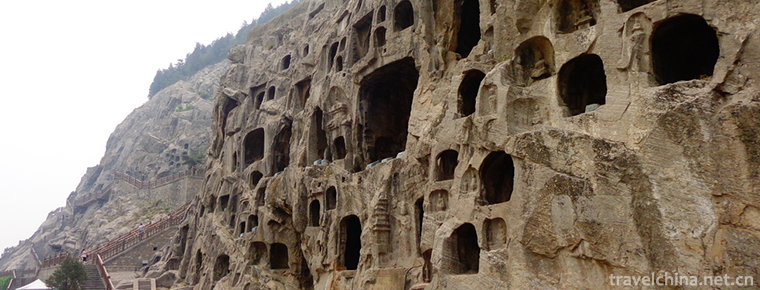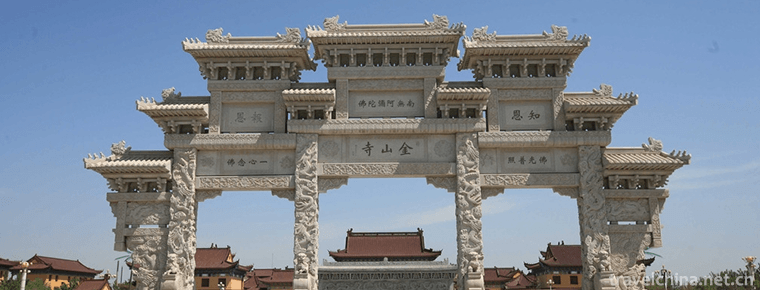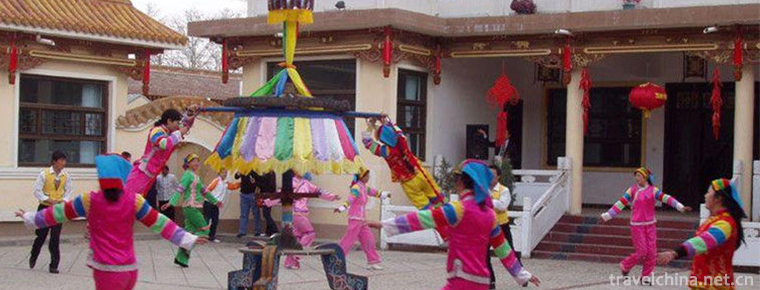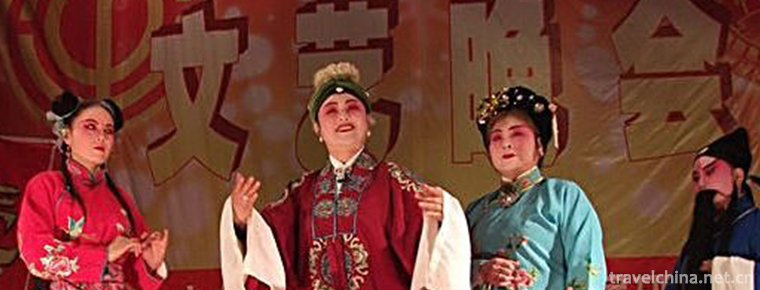Legend of Xu Fudong Du
Legend of Xu Fudong Du
Xufu Dongdu legend is one of the local folklores in Cixi City, Zhejiang Province and Xiangshan County. It originated from the story that Qin Shihuang sought immortality and Xu Fu sought immortality but had to go east to Japan.
On June 7, 2008, Xu Fu Dongdu Legend was approved by the State Council to be included in the second batch of national intangible cultural heritage list.
Historical Origin
In 221 BC, Qin Shihuang unified China and established the Qin Dynasty. In the third year (219 B.C.), after Mount Tai was fengchan, in order to live forever, he traveled eastward to the sea hoping to meet Mount Xianshan. Xu Fu, an academician, wrote, "Speak fast, and seek it with boys and girls." (Historical Records) So Qin Shihuang "left thousands of Xu Fufa boys and girls to seek immortals in the sea." Xu Fu searched for "Xianshan" successively in the Bohai Sea and the Yellow Sea, but failed to find it. In the winter of 210 B.C., Emperor Qin Shihuang made a tour to the south, accompanied by Prime Minister Li Si and Emperor Hu Hai, and crossed the Qiantang River. Xu Fu learns that the killing of terrorists is a long voyage away from the Penglai Mountains of Xiangshan and a turning point to Tazhou, now known as Japan.
Inheritance Significance
As the departure place of Xufu Dongdu, Dapeng Mountain is located in the Longshan and Sanbei areas of Cixi. There are cliff stone carvings and Qindu Temple on the mountain. Xufu legend is widely spread and has great influence in China. There are many legends in Japan and Korea. There are 32 places where Xufu Dongdu landed in Japan and 56 stories. There are 40 legends in Cixi, which have wide influence. Xu Fudong crossed the river of cultural exchange between China and Japan, creating a friendship between China and Japan, which is of great significance. Xu Fu's introduction of Qin civilization to Japan has promoted the leap from rope pattern (primitive) culture to Yosang (ironware tillage) culture in Japanese society. Xu Fu is known in Japan as "God of Agriculture", "God of Silkworm and Mulberry" and "God of Medicine". Xu Fu's legend is of great historical value to the study of immigrant culture. Former Japanese Prime Minister Hamada Zi (progeny of Xu Fu) once led a team to seek roots in the three north areas of Cixi. Japanese friendly personages jointly built a memorial hall of Xu Fu with China, which continued the story of the traditional friendship between China and Japan.
Xu Fudong's journey to Japan contributed to the birth of a "lifelong culture". At that time, there was no writing or farming in Japan. Xu Fu brought words, farming and medical technology to Japan. For this reason, Xu Fu naturally became the "god of agriculture" and "god of medicine" in the eyes of the Japanese people. This is gradually discovered and excavated along with Archaeology and the interaction between the two peoples. In recent years, carbonized rice grain remains have been found in the archaeological site of Banfu, Fukuoka County, Japan. The carbonized rice found in the area of Jinhai, Pusan, Korean Peninsula, is the same type as that found in the area of Jinhai, Pusan, Korean Peninsula. This shows that in the same historical period, the Japanese people began agricultural production, especially rice cultivation. During the same period, Japan also began to use bronze and iron tools and silk fabrics, and began to have text. All of these have nothing to do with the Japanese rope culture before. Japanese academics and archaeologists generally acknowledge that the culture of Yasui originated from the coastal culture of northern China. This is why Japanese characters are similar to Chinese characters.
Current situation of inheritance
Xufu Dongdu legend is a kind of local folk literature which depends on oral inheritance. Therefore, under the impact of modern life, it is declining day by day. At present, the governments of Cixi City and Sanbei Town in Zhejiang Province attach great importance to the protection of Xufu Dongdu legend. In 1995, the Xufu Research Association was established. It published a special issue of Dapeng Tracking, published Dapeng Mountain and Medical Laixian Island, Dapeng Road and other information collections, compiled Dapeng Road-Xufu and Cixi Dapeng Mountain, Dapeng Mountain and Penglai Xiandao-Xufu Dongdu Story, Xufu Dongdu Songs Collection, etc. Huahua Art Festival; protection of historical relics such as Xu Fudong Du and cliff stone carvings; 3.5 million yuan prize money to shoot the TV series "Xu Fudong Du Legend" and so on.
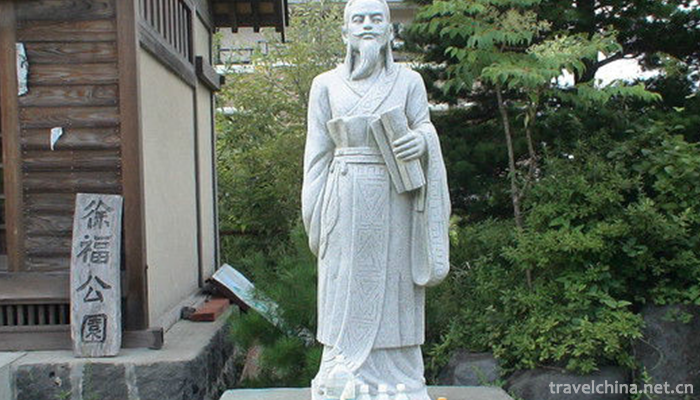
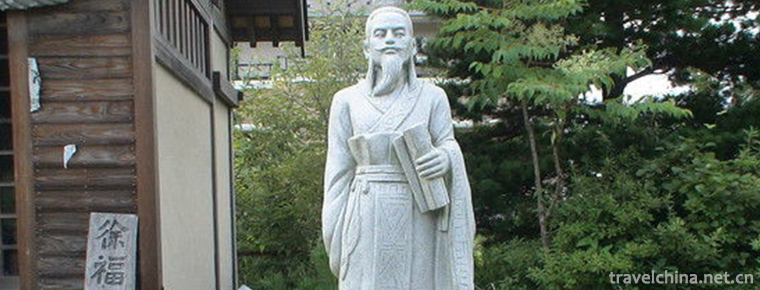
Legend of Xu Fudong Du
-
Lake Manasarovar
Ma Pang yongcuo is 35 kilometers east of the town of Pu Lan county
Views: 194 Time 2018-10-12 -
Longmen Grottoes Scenic Area
Longmen Grottoes is one of the treasure houses of Chinese stone carving art. It is now a world cultural heritage, a national key cultural relics protection unit and a national AAAAA class tourist attr
Views: 274 Time 2018-12-09 -
Guanlan Mountain and Water Pastoral
Shenzhen Guanlan Mountain and Water Pastoral Tourist Park covers an area of 300,000 square meters. It is located in Guanlan Street, Longhua District. It integrates food, housing, hot springs
Views: 152 Time 2019-01-13 -
Island Jinshan Temple
Jinshan Temple, located in the northern part of Qingyun County, Dezhou City, Shandong Province, was built in the Sui Dynasty and flourished in the Tang Dynasty. It is said that the island Jinshan Temp
Views: 145 Time 2019-01-13 -
Yasuaki
Anzhao is an ancient Tu dance. It's popular with mutual aid. When celebrating festivals, harvest celebrations and weddings, people gather in the courtyard or on the wheat threshing ground to dance the
Views: 207 Time 2019-04-02 -
Hubei storytelling
The evaluation of books in Hubei Province is a traditional art of rap and singing in Hubei Province. Popular in northern China, as an independent variety of storytelling,
Views: 194 Time 2019-05-03 -
Ham making skills
Xuanwei ham production technology is a traditional handicraft in Xuanwei area of Yunnan Province. Xuanwei ham is a famous local traditional specialty.
Views: 182 Time 2019-05-05 -
Xihe Opera
Xihe Opera, also known as Xingzi Xihe Opera, is a traditional opera popular in Xingzi, De'an and Jiujiang counties and cities of Jiangxi Province. Its main vocal cavity is Pihuang, also known as "
Views: 140 Time 2019-07-01 -
Miyaro scenic spot
Miyaro, translated as "fun Bazi", is a provincial scenic spot, located in the Zagunao River Valley of the upper reaches of Minjiang River in Lixian County, Aba Tibetan and Qiang Autonomous Prefecture
Views: 120 Time 2020-11-07 -
Wenchuan earthquake epicenter site
The earthquake site, located in Yingxiu Town, Wenchuan, Sichuan Province, is open all day.
Views: 155 Time 2020-11-07 -
The origin of Panzhihua
Panzhihua is located on the Bank of Jinsha River. It was originally named shangxiaba village. It was formed around the 8th year of Tongzhi reign of Qing Dynasty (1869). Because there is an old and tall Panzhihua tree at the entrance of the village, it is called "Panzhihua village".
Views: 157 Time 2020-12-14 -
Leshan medical and health
By the end of 2018, Leshan City had 3259 health institutions (including village clinics). Among them, there are 102 hospitals, 207 health centers, 12 maternal and child health centers (stations, stations), 12 centers for Disease Control and prevention, 12 health
Views: 347 Time 2020-12-17

